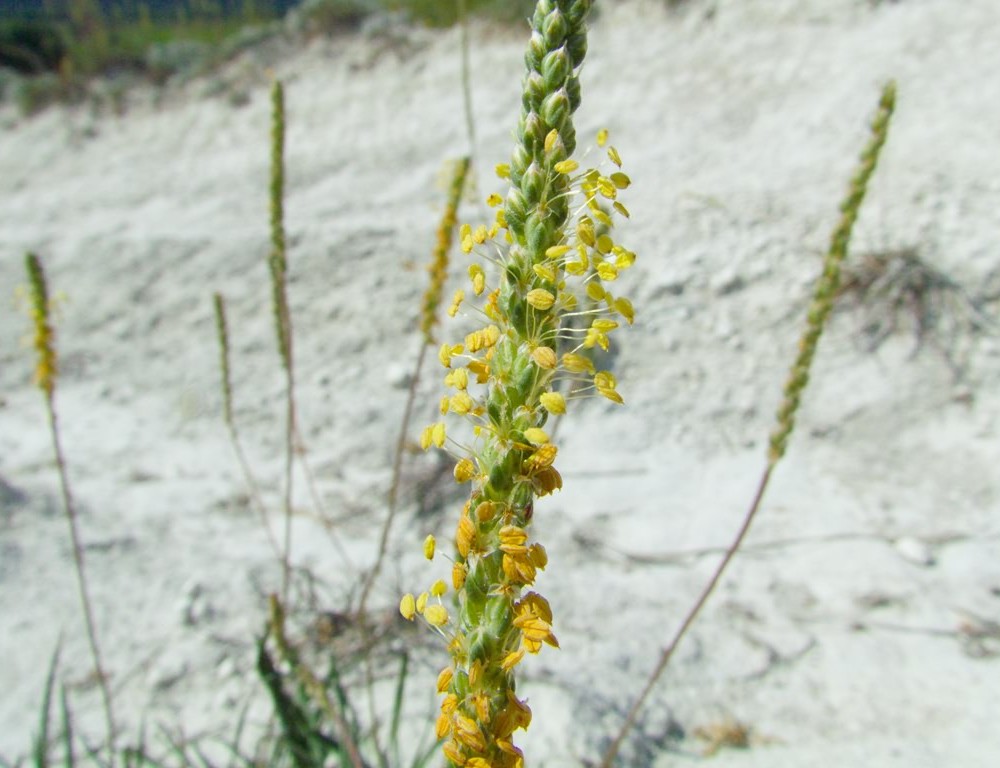Goose Tongue
(Plantago crassifolia)

Description
Plantago maritima, the sea plantain, seaside plantain or goose tongue, is a species of flowering plant in the plantain family Plantaginaceae. It has a subcosmopolitan distribution in temperate and Arctic regions, native to most of Europe, northwest Africa, northern and central Asia, northern North America, and southern South America. It is a herbaceous perennial plant with a dense rosette of leaves without petioles. Each leaf is linear, 2–22 cm long and under 1 cm broad, thick and fleshy-textured, with an acute apex and a smooth or distantly toothed margin; there are three to five veins. The flowers are small, greenish-brown with brown stamens, produced in a dense spike 0.5–10 cm long on top of a stem 3–20 cm tall. In much of the range it is strictly coastal, growing on sandy soils. In some areas, it also occurs in alpine habitats, along mountain streams. Some of the physiology and metabolism of this species has been described, of particular note is how the metabolism of this species is altered with elevated atmospheric carbon dioxide concentrations. Like samphires, the leaves of the plant are harvested to be eaten raw or cooked. The seeds are also eaten raw or cooked, and can be ground into flour. Plantago is a genus of about 200 species of flowering plants in the family Plantaginaceae, commonly called plantains or fleaworts. The common name plantain is shared with the unrelated cooking plantain. Most are herbaceous plants, though a few are subshrubs growing to 60 cm (24 in) tall. The leaves are sessile or have a poorly-defined petiole. They have three or five parallel veins that diverge in the wider part of the leaf. Leaves are broad or narrow, depending on the species. The inflorescences are borne on stalks typically 5–40 cm (2.0–15.7 in) tall, and can be a short cone or a long spike, with numerous tiny wind-pollinated flowers. They are found all over the world, including the Americas, Asia, Australia, New Zealand, Africa and Europe. Many species in the genus are cosmopolitan weeds. They are found in many different habitats, most commonly in wet areas like seepages or bogs. They can also be found in alpine and semi-alpine or coastal areas. The cosmopolitan weeds can be frequently seen at the side of roads. The boundaries of the genus Plantago have been fairly stable, with the main question being whether to include Bougueria (one species from the Andes) and Littorella (2–3 species of aquatic plants).
Taxonomic tree:







